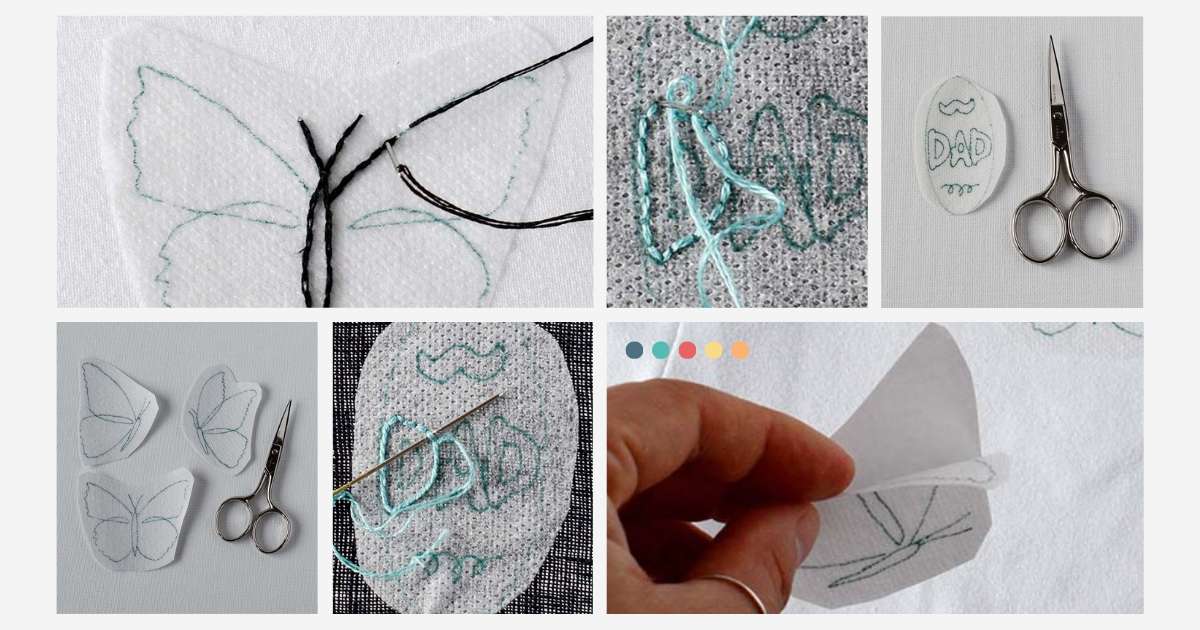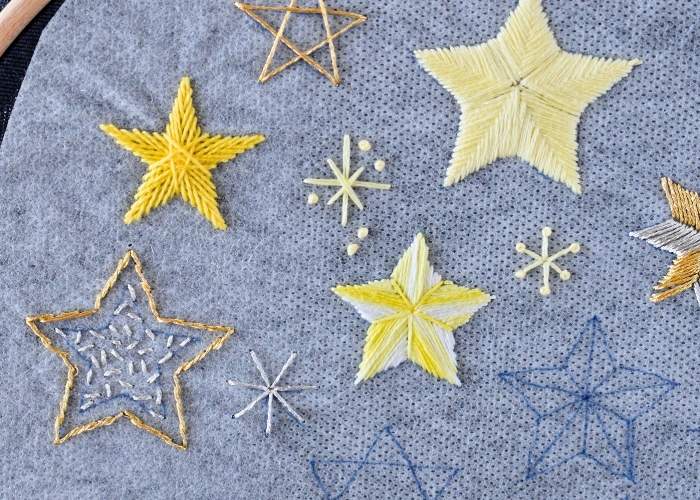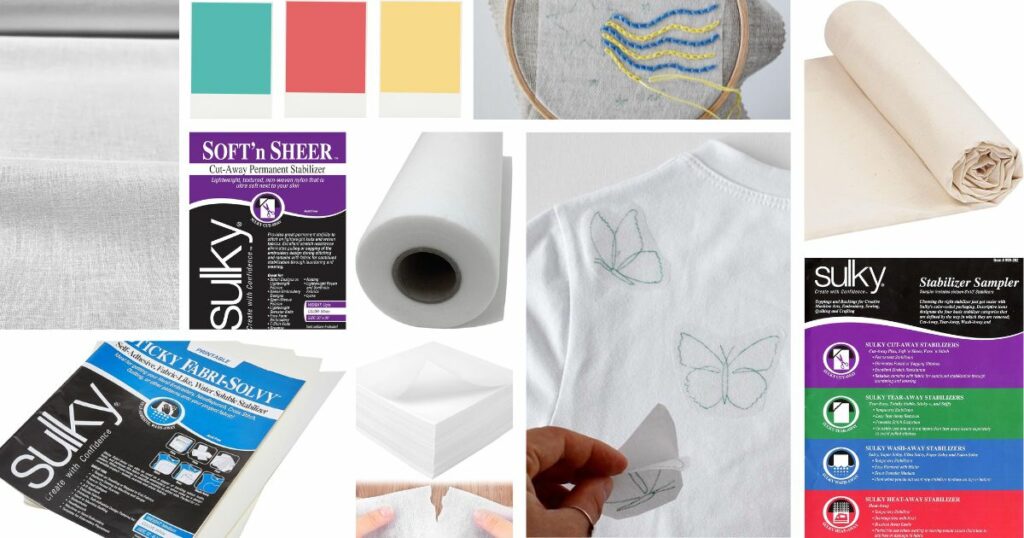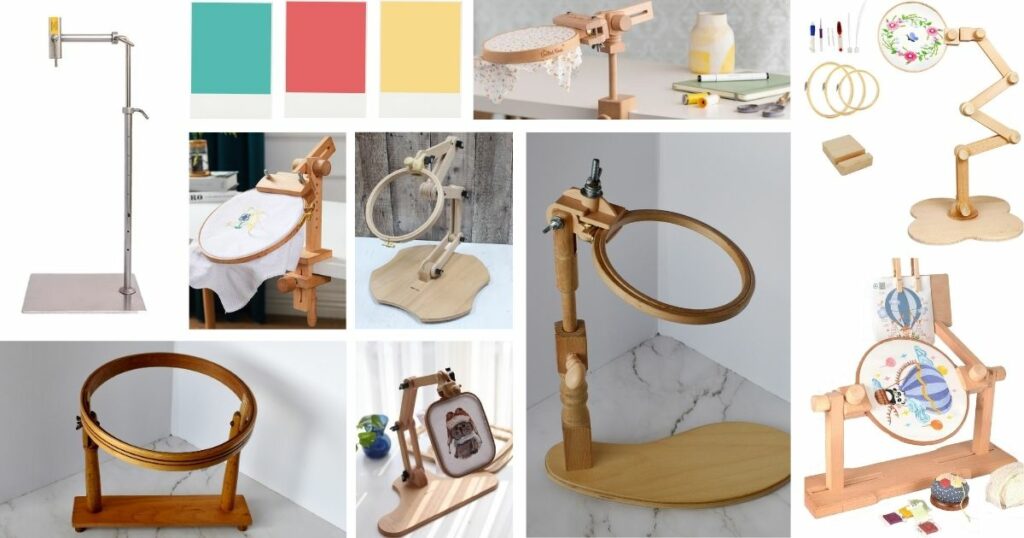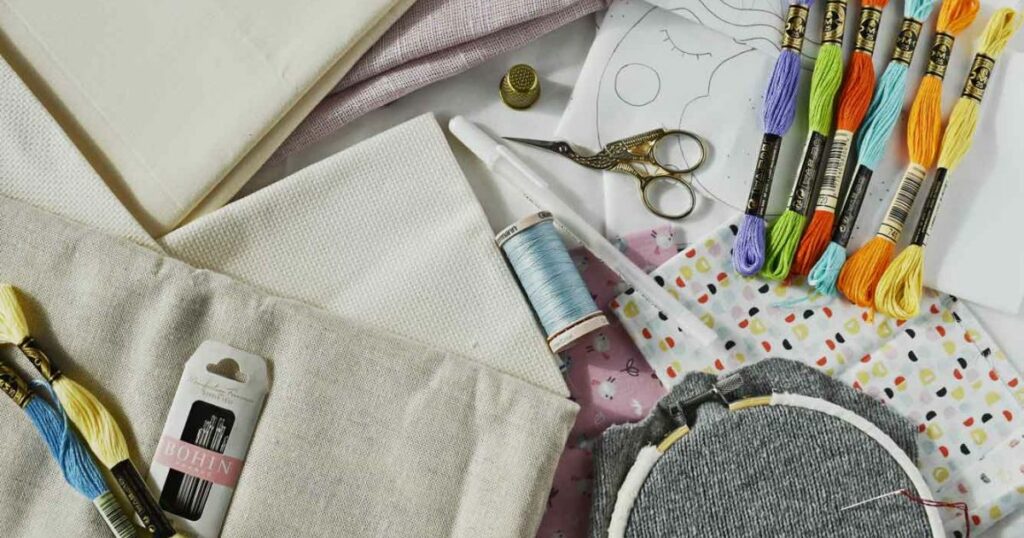The Ultimate Guide to Water Soluble Stabilizers for Hand Embroidery
What are Water Soluble Stabilizers for Hand Embroidery, and Why Do We Use Them?
The world around us is constantly evolving with new technologies, from AI content creation to solar energy and hydroponic agriculture. While hand embroidery remains a very antique and traditional craft, modern innovations and materials have begun to find their way into this creative world. One such innovation is water soluble stabilizers for hand embroidery, which are now an essential tool for many embroiderers.
There are various types of stabilizers, including tear-away, cut-away, and heat-away stabilizers – you can read more about them in the article “Embroidery Stabilizers: Fabric Stabilizers for Hand Embroidery You Must Know“. However, my favorite by far is water soluble stabilizers for hand embroidery. These materials offer temporary support to fabrics during the embroidery process and dissolve entirely in water once the work is complete. Depending on the manufacturer, these products may also be called dissolvable fabric, magic paper, or wash-away stabilizers.
These embroidery pattern transfer stabilizers are often made from materials like polyvinyl alcohol (PVA) and come in different forms, such as films, sheets, or mesh fabrics. Some even have a sticky adhesive backing for added convenience. The most important function of water soluble stabilizers techniques is to ensure that the fabric stays taut and the embroidery remains smooth without puckering or distortion, especially when working on intricate designs or with delicate materials.
The functions of dissolvable stabilizers:
- One of the key roles of water soluble stabilizers for hand embroidery is to assist with pattern transfer. This is particularly useful for darker fabrics or materials with a dense or textured surface, where transferring a design can be challenging. With water soluble stabilizers embroidery, you can even print the pattern directly onto the stabilizer, making it easier than ever to ensure your design transfers perfectly.
- Another essential function of water soluble stabilizers techniques is their ability to prevent stitches from sinking into high-pile fabrics such as velvet or terry cloth, making stitching on these difficult materials much more manageable. These stabilizers provide the needed structure to support your project without distorting the fabric, offering a seamless experience for embroiderers working on challenging fabrics.
- In conclusion, water soluble stabilizers for hand embroidery play an indispensable role in both stabilizing fabrics and facilitating pattern transfer. Whether you’re working with stretchy materials like knitwear or intricate patterns, water soluble stabilizers embroidery are an invaluable resource that ensures your embroidery projects are executed flawlessly.

How do you use water soluble stabilizers?
A step-by-step guide
- Start with transferring the pattern to the stabilizer. Most stabilizers are transparent or semi-transparent, so you can simply layer the stabilizer above the image and repeat all the design lines. Some stabilizers are printable. In this case, print the pattern directly to the stabilizer.
- Cut the piece of soluble interfacing with the pattern and position it on the fabric. If the stabilizer is not adhesive, pin it to the material or attach it with the running stitches.
- If your fabric has a high pile or is highly stretchy, use a more significant piece of the stabilizer and frame it into the hoop with the material. This will keep the tension of the fabric and the pattern fixed in one place simultaneously.
- If the stabilizer is adhesive – cut the piece of stabilizer with the design, peel the backing paper, and attach it to the fabric.
- That’s it! Simply treat water soluble stabilizer like a regular fabric while embroidering.

Removing dissolvable fabric
- When you finish the embroidery, you are ready to dissolve the stabilizer.
- First, remove the embroidery from the hoop.
- Cut away as much of the stabilizer as you can. Less stabilizer you need to dissolve – faster and more straightforward it will be.
- Place the embroidery with the stabilizer into the lukewarm water and let it stay for a while. You will see the stabilizer dissolving. The time it will take to fully dissolve will depend on the type of stabilizer. Always read the instructions of the producer of the stabilizer on how to remove their product first.
- You do not need to rub or squeeze the embroidery. Just give it some more time.
- After all the stabilizer is gone, rinse the embroidery with running water before it dries again. After the embroidery is dry, if you feel that the fabric is stiff or some residue is left, simply wash the embroidery one more time.
How to use water-soluble stabilizer for hand embroidery pattern transfer – Video Guide
Application tips for soluble stabilizers
- Use shorter threads. The longer your working thread, the more times it will have to pass through the stabilizer and the fabric. This can cause the loss of the sheer of the thread (because of the friction) and make it a bit sticky (if your stabilizer is adhesive).
- To prevent the loss of the sheer of the thread – use the beeswax thread conditioner. It will protect the thread from friction.
- Keep your hands clean and dry while you work. Wet hands may cause some disruption of the stabilizer.
- Be careful about the environment where you embroider. Avoid scorching and humid places like swimming pools, saunas, or beaches. Impacted by the wet environment, water soluble stabilizers can dissolve as you work, lose the stickiness, or deform.
- Clean the needle with a wet wipe if you feel the needle is sticky.
Common mistakes to avoid when using water soluble stabilizers
- When you transfer the embroidery pattern to the stabilizer, choose the transfer tools carefully. Remember that you must submerge the embroidery in water, so any pen that bleeds can ruin your finished embroidery. Pick a friction pen, pencil, or water-soluble transferring pen for pattern transfer.
- You should never steam iron the stabilizers, as they will start dissolving with the water from the iron’s steam.
- Store your water soluble stabilizers in a cool, dry place, far from direct sunlight and humidity. Over an extended period, water soluble stabilizers can degrade, especially when exposed to extreme temperatures or moisture. The best place to store stabilizers is an airtight box or zip-lock bag.
Choosing the Right dissolvable Stabilizer
Disclaimer. To cover the cost of creating free embroidery patterns and video tutorials for this blog, I do sometimes link to products. Please assume these links are affiliate links. If you choose to buy through my links then THANK YOU – it will make it possible for me to keep doing this.
A wide range of water-soluble stabilizers is available in craft shops and online. Here are some factors to consider when choosing one:
- Do you plan to print embroidery patterns with your printer or transfer them by hand? Usually, the water soluble stabilizers in the sheets ready for the printer have a slightly higher price. Still, it can be very convenient, especially if you do not use a ton.
- What size is your embroidery pattern? You can find water soluble stabilizers in the sheets of A5 and A4 or the rolls.
- Do you want an adhesive water soluble stabilizer? This stabilizer is excellent for smaller patterns as you can use them as stickers and use a peel, stick, and stitch approach. The downside of these stabilizers is that they will not stick to high-pile fabrics. Also, some adhesive water soluble stabilizers gum up your needle and make it feel sticky.
- What kind of fabric are you going to embroider on? Water soluble stabilizers come in different weights that can fit your material best. Choose lightweight stabilizers for tulle or other sheer and light fabrics. And heavier mesh water soluble stabilizers for heavier linens, cotton, or canvas.
- What is your embroidery project? There are water soluble stabilizers made especially for counted stitch embroidery. These stabilizers allow embroidering counted stitch embroidery on non-counted fabrics without drawing a square grid. It is convenient if you want to apply a cross-stitch pattern to your jeans, t-shirt, or tote bag.
Where to buy water soluble stabilizers?
After considering all the information mentioned above and knowing what kind of stabilizer you need, it’s time to buy some water-soluble stabilizers for your next project.
Look for these stabilizers at your local craft, fabric, or notion shop. And, of course, you will find plenty of options online:
- Joann.com online store has a wide range of water soluble stabilizers.
- DMC, the famous producer of embroidery floss, offers water soluble stabilizers under the name of Magic paper. You can choose the sheets of A5 and A4. Besides that, you can select the paper with the grid for more effortless pattern transfer.
- Sulky is one of the best-known producers of stabilizers. You can shop on their website.
- Pellon is another renowned producer of stabilizers and craft supplies. They have a shop on their website, too.
- Amazon offers almost all the options available on the market. Here are some of the choices:
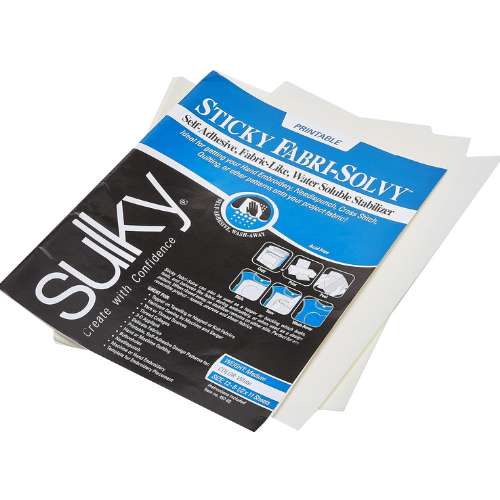
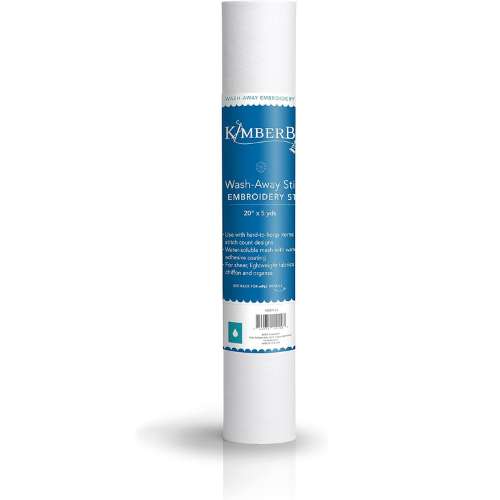
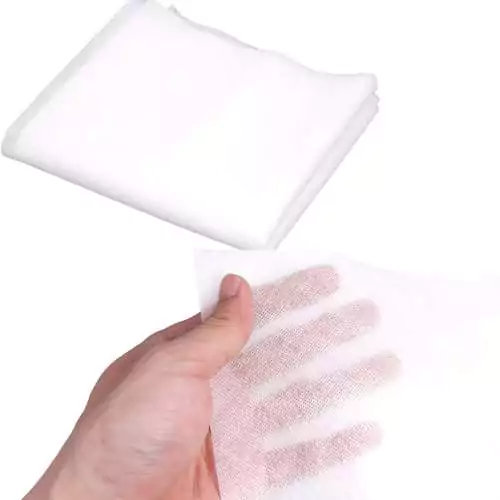
Frequently asked questions about wash away stabilizers
What are water soluble stabilizers?
A water soluble stabilizer for hand embroidery is a temporary embroidery backing material that dissolves in water after the embroidery is done without residue. We use it to layer with our embroidery fabric to stabilize it and to transfer the pattern to the material.
How do water soluble stabilizers work?
- The stabilizer with the embroidery design is layered above the fabric.
- Embroidery is made through both layers – the material and the stabilizer.
- The embroidery is washed to remove the stabilizer.
What are the different types of water soluble stabilizers?
- Water soluble stabilizers come in different shapes and sizes. You will find these wash-away stabilizers in sheets (A5, A4) or in rolls of various lengths.
- Soluble stabilizers can be made as a mesh fabric or film. They also vary in weight.
- Dissolvable stabilizers can be sticky and non-sticky. Sticky water soluble stabilizers have a paper backing and work as stickers. You peel them from the paper backing and apply them to the fabric.
Can you draw on a water soluble stabilizer?
Yes! Water soluble stabilizers are a convenient tool for pattern transfer. Some of the stabilizers are even printable. Be careful when you choose a tool for drawing! The pen or pencil you will use should not bleed when wet, as you must wash the finished embroidery. I use a friction pen or a simple pencil for pattern transfer on the water-soluble stabilizer.

Are Embroidery water soluble stabilizers eco-friendly?
Even if it may look like it, these dissolvable fabrics are not made from actual plastic. The main ingredient of these stabilizers is polyvinyl alcohol (PVOH), a synthetic biodegradable polymer without toxic metals that does not release harmful chemicals when it degrades.
You can learn more about this material on the Green Eco Dream blog.
What are the Top brands of water soluble stabilizers?
- Sulky
- DMC
- Pellon
Final thoughts on Water soluble stabilizers
Water soluble stabilizers are a great innovation in hand embroidery. They are simple to use and handy for pattern transfer and stabilizing stretchy fabrics like jersey or knitwear. Using a simple stabilizer can make the hand embroidery process more enjoyable and the results much more pleasing.
Benefits of water soluble backings:
- Easy pattern transfer
- Stabilization of the stretchy fabrics
- Possibility to embroider on high-pile fabrics
How to use water soluble stabilizers?
- Transfer the pattern to the stabilizer.
- Layer the stabilizer with the fabric (or stick it to the material).
- Embroider.
- Wash away the stabilizer.
Different types of dissolvable stabilizers:
- You can choose from sticky and non-sticky water soluble stabilizers.
- Stabilizers can be made as a film or as a mesh fabric.
- Washaway stabilizers come in sheets or in rolls of various lengths.

